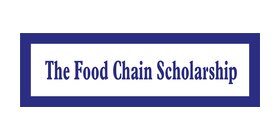Report Synopsis
British Dairy Exports: the opportunities and challenges
Total domestic milk production in the UK is strong, reaching a thirty-year high of around 15 billion litres in 2020. Continued technological and genetic advances at farm level, coupled with a near ideal climate for grass growth, mean further increases in milk output are achievable and most probable.
The UK dairy market is dominated by high volume but relatively low value liquid milk serving the domestic retail sector. As a result, British dairy products currently have very little exposure to developing export markets. Furthermore, consolidation of UK milk processing capacity in recent years has been in an effort to streamline individual business efficiency by stripping overheads and concentrating processing on a smaller number of sites made to work longer and harder – a result of intense competition for domestic retail market share, particularly in the liquid milk sector.
Although dairy consumption per capita across Western Europe continues to decline slightly year on year, from a global perspective there is cause for cautious optimism. A recent report from the International Farm Comparison Network (IFCN) shows the massive potential for export-led growth in the UK dairy sector. It predicts an increase of 1.2 billion consumers globally by 2030, plus an uplift in dairy consumption per capita from 116ME (milk equivalent of dairy products) to 135ME. This will require an additional 295 billion litres of milk annually, giving the UK’s dairy industry a potentially fantastic opportunity to flourish within such an optimistic global demand outlook.
This Nuffield Farming study explores opportunities to integrate British dairy products and ingredients with developing export markets, particularly in Asia, through grasping the food cultures and socio-economic drivers which are resulting in double-digit growth in dairy consumption in many key regions. While consumption of dairy products experiences exponential growth in these regions, their domestic milk production at farm level is often unable to balance regional demand.
The many complexities surrounding international trade and successful penetration - while operating in the high value consumer-facing branded market – encountered by some of the world’s most dominant dairy companies and co-operatives became evident. The pursuit of Asia’s gen-Z, ultra-fast-paced food trends, and subsequent need for constant product innovation in order to remain relevant, inevitably leads to massive added cost for dairy processors. But does this necessarily result in overall added value of milk throughout the whole supply chain? “Today’s value-add is often tomorrow’s commodity!”
Globally traded dairy commodities, technical dairy ingredients and consumer-facing branded products are all potential channels for UK milk. Which routes to international market could consistently deliver greater value to the whole UK dairy industry? At farm level we are technically well placed to compete on a global stage, and a rapid surge in dairy demand leading to a growing dairy deficit in some key Asian markets presents a significant opportunity. However, export-geared investment in stainless steel processing capacity is required in the UK to gain market exposure globally. Furthermore, industry skillsets and international market know-how is required before concrete and stainless steel, as there are significant challenges and complexities surrounding international dairy trade. Having an element of export-focussed dairy growth in the UK would drive competition for farmgate milk, put greater value in the bottom end of our market and optimise the whole seasonal profile of UK milk production.
Richard Walker

The Food Chain Scholarship

Similar Reports
- 2023
What's the beef? Opportunities for beef on dairy in New Zealand.
Matt Iremonger - 2023
The world of cacao
Linda Kopczinski - 2022
New Zealand Dairy Trade And Market Expansion Opportunities.
Parmindar Singh - 2022
The Utilisation and Impact of Robotics on Large Scale Dairying
Alisdair Cook
